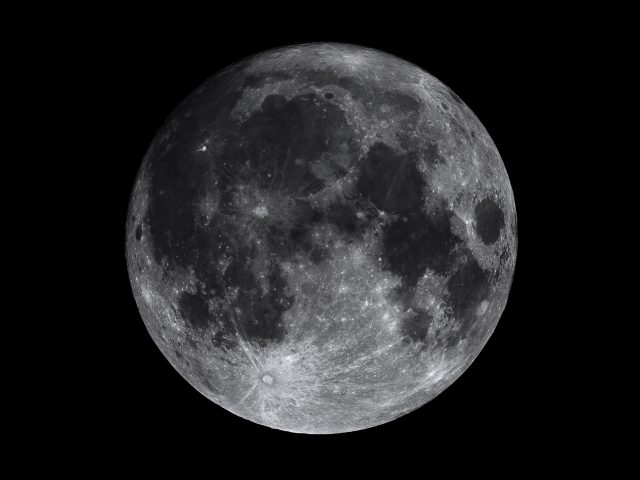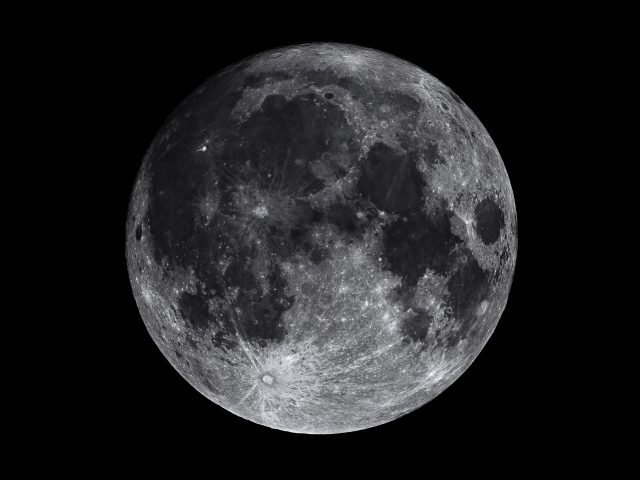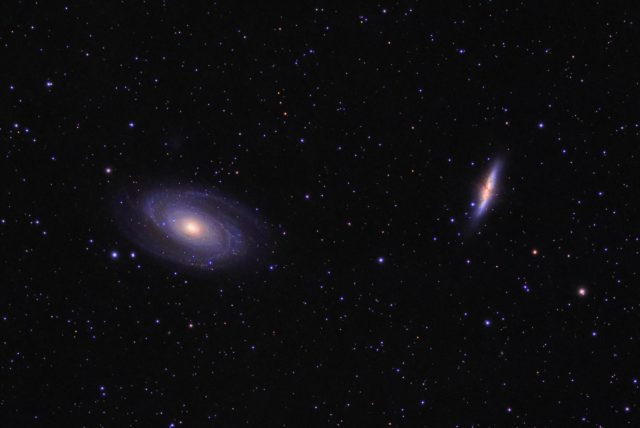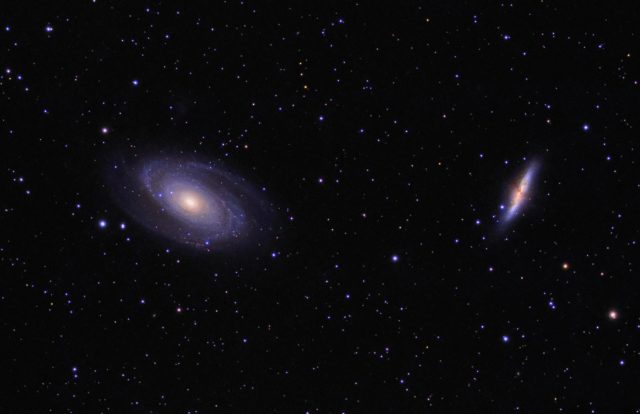
The Supermoon of November 2016 was set to be the biggest of the year. I tried to get a good mosaic of it, but the seeing was poor on this morning, so it is not quite as sharp as I would have liked. The mosaic took about 30 panels to construct and lots of time and effort to put together.
I took this on the morning of the 14th, so there was a chance the seeing was better in the evening when the moon still looked full, but I was too tired to go another round by that time. So, I worked through several iterations of the data I already had and came up with what I think is a reasonably good image.
I also created an enhanced image that is basically just sharpened more. A couple of seams are more obvious in this version, but I figure not bad enough to spend too much time on trying to correct:



